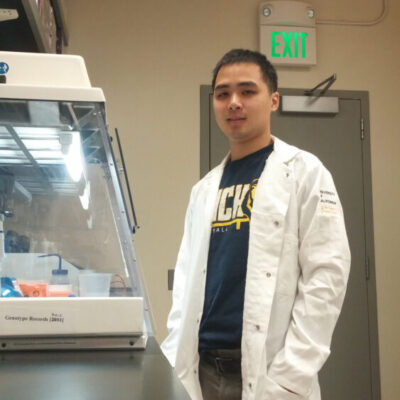Ching-Hsiu Hsu L&S Sciences
Development of Retinal Direction Selective Circuit
A basic question in neurobiology research is how neural circuits are wired up to perform computations. A classic example of neural computation is that which underlies the visual systems ability to detect the direction of moving object. Input to the retina is encoded by photoreceptors, which are point detectors of light and by themselves cannot determine the direction an object moves. However at the output of the retina, there is a class of neurons that signal robustly when object moves in one direction over any other. These direction-selective cells have been the focus of extensive research and the neurons that comprise the circuit that perform the computations are well defined. The Feller lab is interested in how the connections between these neurons, i.e. the direction selective circuit, emerge during development. My research aims to study the development of the synapses the connections between neurons within the direction selective circuit. Specifically, I will use fluorescent labeling of genetically identified neuronal subtypes and advanced microscopy methods to study how the spatial distribution and strength of synapses in the direction selective circuit matures during development.
Message To Sponsor
I am honored and grateful for this wonderful opportunity to conduct research as a SURF fellow. Though my coursework has been important for establishing the foundation for understanding modern science, this program gives me the chance to do research full time using state-of-the-art technologies in a world-renowned UC Berkeley laboratory and directly contribute to outstanding scientific questions. I believe this experience will help prepare me to pursue a Ph.D. in neurobiology. I am thankful to the Pergo Foundation and the SURF program for their support.